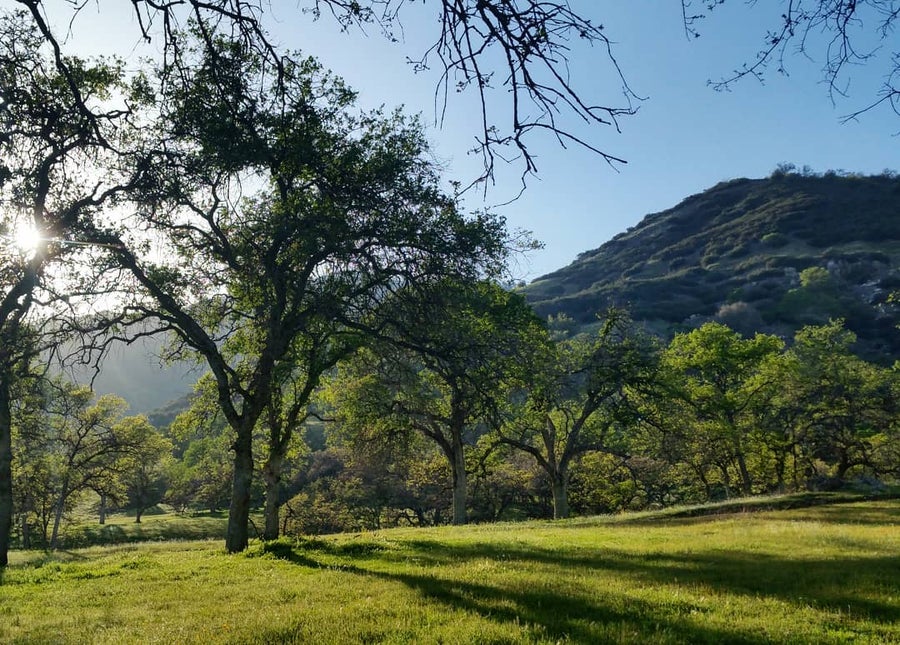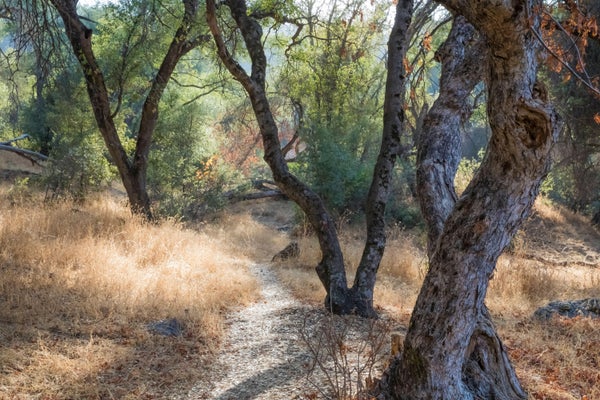Today, we head into the Sierra foothills.
In today's episode it's April and we've made our way into the blue oak woodlands in Sequoia National Park in California. These woodlands are found nowhere else in the world except for the foothills surrounding the Central Valley. The wet season has transformed these normally golden and dry hills into a blanket of green with pockets of short-lived wetlands.
We'll start our hike well before dawn, listening to the creatures of the night, including a magnificent chorus of crickets and frogs, punctuated by a couple of species of owls. Around dawn, we'll hike up into the chaparral shrubland above and await the very first bird songs of the day. We'll then take our time exploring the unique species of these ecosystems on our hike back down to the woodlands below. Let's go for a walk.
On supporting science journalism
If you're enjoying this article, consider supporting our award-winning journalism by subscribing. By purchasing a subscription you are helping to ensure the future of impactful stories about the discoveries and ideas shaping our world today.
Listen to all of the insects. Especially the crickets.
As a mostly dirunal species, we humans rarely venture outside after dark, but there's plenty of life and activity to discover when the sun goes down.
I've brought you to the edge of a small ephemeral wetland in this woodland. Formed by the brief wet season, this pond and the tiny streams draining into and out of it will completely dry up over the next few months. While it's here though, it will attract all kinds of wildlife and is a wonderful source of natural sounds. Let's spend some time sitting next it and listening to what's out there in the darkness.
I hear some Pacific treefrogs starting to call.

The blue oak woodlands of Sequoia National Park, transformed by the ephemeral wet season. Credit: Jacob Job
These frogs are mostly green with a black stripe through their eye. During the hottest and driest months here, they'll hibernate in the wettest and most protected places they can find. After the rainy season, like it is now, they make their way to ponds like these to breed. Once eggs are laid, it's a race against time for the tadpoles to hatch and mature into adults before the wetlands dry up.
Huh, I hear an owl.
Hear it?
It's a Western Screech Owl.
They're not that far away. Let's sit really still and see what happens. (***whisper***)
To our right! (***whisper***)
So many! (***whisper***)
Huh, hear that? (***whisper***)
They're clacking their bills together. I'm not positive, but I think it's part of their mating ritual. I've never heard it before. (***whisper***)
It's so quiet out here. I just love it.
Huh, another owl!
A Barn Owl.
If we didn't know what those screams were, it might be pretty intimidating. Barn Owls are mostly all white, so I suppose they can kind of look and sound like ghosts of the night.
Well, I think we should probably start making our way uphill into the chaparral if we're going to get there before the first birds start singing.
There it is! The first song of the day, (***slight pause***) and maybe the last cricket of the night.
The bird is a Bewick's Wren. It's small and brown, with a tail stuck straight up into the air.
Here come some more birds. It's really special being able to hear the very beginning of the dawn chorus. Let's see who we can pick out.
Hear that 'catlike' mew?
There.
It's from a Spotted Towhee. It's a type of sparrow, but it doesn't really resemble what you might think of as a sparrow. It's quite a bit larger, almost robin-sized. It has a red eye buried in an all black head and neck, with rusty colored sides, and a white belly. It's really pretty. There seems to be quite a few up here.
Woah!
Those loud, digital sounding notes are from a California Thrasher.
There it is again.
It's up on top of that chamise bush. See it?
It's pretty non-descript, but check out that curved bill!
There's another one counter singing with this guy. Let's listen to them talk to each other.
Here's an easy to overlook bird. Those low, cooing sounds are coming from Mourning Doves.
They are fairly common here and really, across most of the country, but because their songs aren't overly loud, they can get ignored.
Do you hear that?
Woah!! We just got buzzed by a flock of Band-tailed Pigeons. They sounded like fighter jets.
Here those three notes?
There.
That's one of the truly classic sounds of these California oak ecosystems. It's from an aptly named Oak Titmouse. Look at the tiny little crest on the top of its head.
Let's head back down trail to where we started in the dark earlier this morning. I want you to hear how different it sounds now that the sun is up.
Remember when I said the Oak Titmouse was one of the classic sounds of this ecosystem. Well this California Quail is another one. You can hear their songs ringing throughout the woodland during the spring. It kind of sounds like they are saying "Chicago, Chicago, Chicago". I'm sure we'll hear them again.
Here's a new species. That sound like a ball bouncing down stairs is from a Wrentit.
They're going to stay pretty well hidden in the chamise, but if you can, try to get a look at their really long tails.
Check it out. Another California Thrasher is sitting atop that Manzanita tree. Let's sit back and really listen to what this guy has to say.
The quail are getting close. Let's stay really still so we don't scare them. (***whisper***)
So cool. (***whisper***)
Huh! Listen.
I know you're not going to believe this, but that was an Anna's Hummingbird singing. It sounds so robotic. Hopefully it sings again.
I've only heard that song a few times and certainly never from that close.
This has been been a really good trip to a lesser traveled section of the park. I hope I've opened your eyes and ears to the blue oak woodlands. And with that, I think it's time to head back. I hope you've enjoyed this as much as I have. I'll see you on our next National Park Nature Walk.

